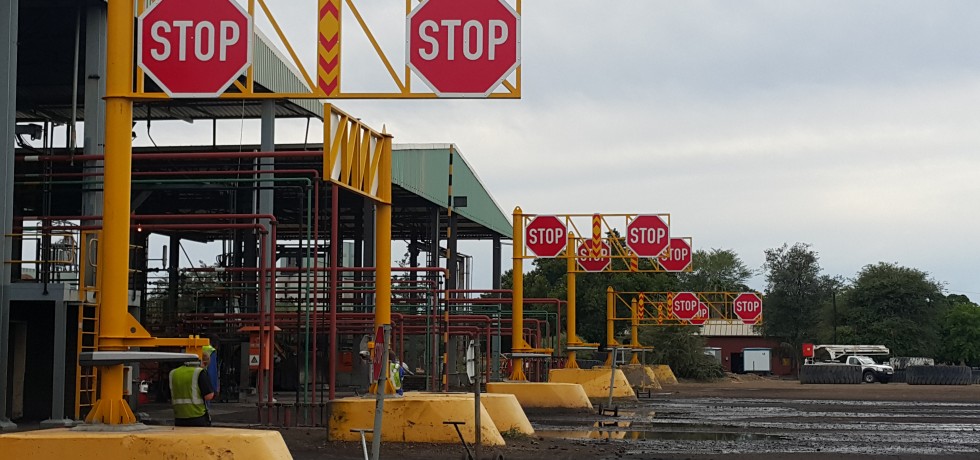Nozzle Detection
OVERVIEW
After refueling has taken place, one of the most common HSEQ risks that can occur, is a vehicle leaving the refueling bay with the Fuel Nozzle still connected (in the case of Wiggins/Banlaw type nozzles), or still inserted (in the case of ZUA/Scully type nozzles), in the vehicle.
The Risks Associated with This are
- Damage to refueling equipment, including nozzles, pump, hoses, meters and Gantry structure
- Damage to vehicle.
- Environmental responsibility due to spillage of Hydrocarbon products.
- Danger to personnel.
- Delay In production due to vehicles unable to refuel, Internal Investigations etc.
LAS have developed a Nozzle detection system which makes use of RFID (as used In the LAS Fuel Management Systems), to detect the presence of the Nozzle in its custom Nozzle holder.
The Equipment Comprises of The Following Components:
- Nozzle Holder- LAS standard holder range caters for Wiggins, Banlaw, ZVA32/25/19mm,Scully, Fulcrum. Custom holders can be designed as required.
- Nozzle Tag – RFID tags are available in a range of configurations. Peel off, button, Slim etc. Tags are fitted to nozzle In an unobtrusive position.
- Nozzle reader – the reader Is mounted on the Nozzle holder, in such a position that when the Nozzle Is inserted into the holder, the tag lines up exactly with the reader.
- 3 x Hose tray stands.
Advantages
- RFID switching does not allow for bypassing as would typically be found if a mechanical switch was used.
- 1 Nozzle tag programmed to work with 1 specific reader.
- Programming of the reader is done using a master tag which is in the possession of a supervisor/manager.
- System is stand-alone and does not require interfacing with networks, other systems.
Interfacing with Peripheral Equipment
The nozzle detection system can be adapted to interface with existing safety equipment on site, or LAS can supply the following easy to install options.
Boom
The equipment consists of:
- Baseplate, Motor, Cover and Mast shaft – a 800mm x 800mm baseplate, motor and pole coupling.
- Mast with 3x 5m fiberglass arm/flag arrangements. Each flag is 2000mm x 5000mm.
Site requirements
- 1m x 1m x 300mm reinforced slab (with m16 studs cast into slab) or mounting a baseplate on existing slab using suitable anchors
- 5,5m clearance above slab
- 5m radius clearance around slab for boom travel
- 220v power at boom
- 12v/24v 4-core cable running from boom base to nozzle holder
- Clear space from hose connection point, to position where Nozzle holder will be mounted.
Operation:
- Nozzle is removed from holder -boom Is closed. Nozzle inserted in holder – boom Is open.
- Nozzle holder positioned where hose us at full length. This will ensure that hose does not lie in drivewa
Traffic Light
Equipment consists of
- Baseplate and 3m mast
- Red/Green traffic light
Site requirements:
- 1m x 1m x 300mm reinforced slab (qith m16 studs cast into slab) or mounting of baseplate on existing slab using suitable anchors
- 3m clearance above slab
- 220v power at traffic light mast
- 12v/24v 4-core cable running from Boom base to Nozzle holder
- Clear space from hose to connection point, to position where Nozzle holder will be mounted
Operation:
- Nozzle is removed from holder -light is red. Nozzle inserted in holder – light is green.
- Nozzle holder positioned where hose us at full length. This will ensure that hose does not lie in driveway
Advantages
- Highly visible LED lights


